Otoplasty in Guadalajara
Search and Compare the Best Clinics and Doctors at the Lowest Prices for Otoplasty in Guadalajara

Find the best clinics for Otoplasty in Guadalajara
With Medijump you can browse 4 facilities offering Otoplasty procedures in Guadalajara. The cheapest price available is $1,578 in Mexicali, Cancun
Otoplasty in Mexico
Price: $ 1,578
Otoplasty in Mexicali
Price: $ 1,578
Otoplasty in Guadalajara
Price: $ 1,803
Egypt offers the best prices Worldwide
Price: $ 100
From 16 verified reviews
Jose Luis Vivanco, 17 September 2019
Plastic surgery with the best Doctors, unique attention with a comprehensive treatment of patients.
From 12 verified reviews
Karina Ortiz, 07 May 2018
I had surgery 3 weeks ago and everything was great, excellent doctors, nurses, facilities and treatment.
Dr. Alfonso Ledesma ENT Consultation Office, can be found in Av Terranova, Guadalajara, Mexico and offers its patients Otoplasty procedures as well as 9 other procedures, across 3 different procedure categories. At present, there is no pricing information for Otoplasty procedures at Dr. Alfonso Ledesma ENT Consultation Office. The pricing information is quite specialised, so it's only available on request, and the average price is around $2,052. The lead specialist at the Hospital will be carrying out all the treatments, and Dr. Alfonso Ledesma ENT Consultation Office is not accredited by any recognised accreditations institutions.
Neoplastic - Cardenas Cirugía Plastica, can be found in Av Terranova, Guadalajara, Mexico and offers its patients Otoplasty procedures as well as 14 other procedures, across 2 different procedure categories. At present, there is no pricing information for Otoplasty procedures at Neoplastic - Cardenas Cirugía Plastica. The pricing information is quite specialised, so it's only available on request, and the average price is around $2,052. The lead specialist at the Hospital will be carrying out all the treatments, and Neoplastic - Cardenas Cirugía Plastica is not accredited by any recognised accreditations institutions.
Compare Before & After Photos of _procedure_photos.phpOtoplasty
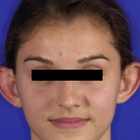
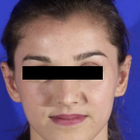
Front view
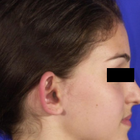
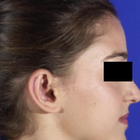
Full-side view
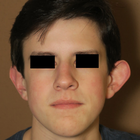

Front view
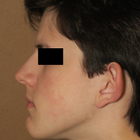
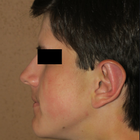
Full-side view
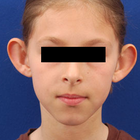
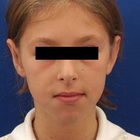
Front view
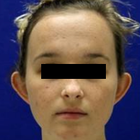
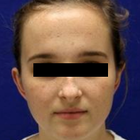
Front view
WHY US?
At Medijump, we're making medical easy. You can search, compare, discuss, and book your medical all in one place. We open the door to the best medical providers worldwide, saving you time and energy along the way, and it's all for FREE, no hidden fees, and no price markups guaranteed. So what are you waiting for?

Free

Best Price

Widest Selection

Risk-Free
What you need to know about Otoplasty in Guadalajara

Otoplasty, also referred to as cosmetic ear surgery, is a type of cosmetic procedure to change the size, shape, or position of the ear. It is performed on the visible part of the outer ear, called auricle. Some people choose to have the surgery to correct odd-shaped ears due to an injury or birth defect. Others have it because they are concerned with how their ears protrude too far from their head. Otoplasty can be performed at any age after the ears have reached their full size, generally after age 5. In some cases, the surgery may be done as early as age 3.
There are several types of otoplasty. The following are the most common:
- Ear pinning draws the ears closer to the head. It is usually done on people whose ears stick out too far from their head.
- Ear augmentation is ideal for individuals whose ears are small or have not completely developed. This type of otoplasty can increase the size of the outer ear.
- Ear reduction is usually done on people with macrotia, which is a condition when the ears are larger than normal. Otoplasty can reduce the size of the ears.
What does a Otoplasty Procedure Involve?
Otoplasty is typically carried out under local anesthesia with a sedative, so you will be awake but you will not feel any pain. In some cases, general anesthesia may be used, typically for younger children.
The techniques used by your surgeon vary based on the type of otoplasty you are having. In general, your surgeon makes an incision either within the inner creases of your ears or on the backs of your ears. Then, your surgeon manipulates the tissue of the ear, which may include removal of cartilage or skin, grafting of cartilage to the ear, or folding and shaping of cartilage using permanent stitches. Once your surgeon is done correcting the shape, size, and position of your ears, the incisions are closed with stitches.
How Long Should I Stay in Guadalajara for a Otoplasty Procedure?
Otoplasty can take between 1 and 3 hours to perform, depending on the complexity and the specifics of the procedure. It is typically done as an outpatient procedure, which means you can leave the hospital on the same day. It is recommended that you stay in Guadalajara for 7 more days for follow-up checkups and removal of stitches.
What's the Recovery Time for Otoplasty Procedures in Guadalajara?
The recovery period may vary from one person to another. You may experience numbness for several weeks, and mild bruising for about 2 weeks. For several months, your ears may feel stiff and sore.
You should be able to go back to work and resume your normal activities, including exercise, within one to two weeks after surgery. Physical contact sports, such as rugby, football, or judo, should be avoided for at least 3 months. You should also avoid swimming for up to 8 weeks following your otoplasty.
What sort of Aftercare is Required for Otoplasty Procedures in Guadalajara?
Your surgeon will provide post-operative instructions. Make sure to follow the instructions carefully to promote smooth and quick recovery. You should rest with your head elevated on 2-3 pillows to minimize swelling. It is recommended that you eat a light, soft, and cool diet for several days. Take pain medication as prescribed by your doctor. Avoid sleeping on your side or rub the incisions to keep pressure off your ears. Consider wearing shirts with loose-fitting collars or button-down shirts.
What's the Success Rate of Otoplasty Procedures in Guadalajara?
Otoplasty is a safe and effective procedure, with high satisfaction rates. More than 90% of people who had the procedure claimed to be extremely happy with the results. Note that it may take some time for the result to be fully visible.
While it is a safe procedure, you still need to be aware of possible risks and complications that otoplasty carries. These include bleeding, hematoma formation, infection of the skin, infection of the cartilage of the ear, permanent or temporary numbness around the affected area, scar or keloid formation, unfavorable results, prolonged pain, narrowing of the external ear canal, impaired healing, changes in skin sensation, asymmetry, and overcorrection.
Are there Alternatives to Otoplasty Procedures in Guadalajara?
There are not many viable alternatives to otoplasty as of yet. One of the most popular alternatives is nonsurgical otoplasty, which does not require any incisions. The procedure uses special sutures to pin the ears back and achieve a more symmetrical look. These sutures are woven into the ears and will remain in place permanently. They are also virtually invisible, so the results will look natural.
For babies under three months old with prominent ears, ear-molds can be taped to their ears to reshape the ears without surgery. This type of treatment typically takes about six to eight weeks.
What Should You Expect Before and After the Procedure
Before otoplasty, you may have prominent or large ears or other deformity caused by an injury or birth defect that bothers you. Some people also feel self-conscious and embarrassed by the shape, size, and position of their ears. After the procedure, your ears will be corrected. Small or underdeveloped ears will be augmented to increase the size, the size of large ears will be reduced, and prominent ears will be drawn closer to the head. Your appearance will improve and you may feel more confident.
Whilst the information presented here has been accurately sourced and verified by a medical professional for its accuracy, it is still advised to consult with your doctor before pursuing a medical treatment at one of the listed medical providers
No Time?
Tell us what you're looking for and we'll reachout to the top clinics all at once
Enquire Now

Popular Procedures in Guadalajara
Prices Start From $28

Prices Start From $1,945

Prices Start From $120

Prices Start From $275

Recommended Medical Centers in Guadalajara for Otoplasty

- Interpreter services
- Translation service
- Religious facilities
- Medical records transfer
- Medical travel insurance
- Health insurance coordination
- TV in the room
- Safe in the room
- Phone in the room
- Private rooms for patients available

- Interpreter services
- Translation service
- Religious facilities
- Medical records transfer
- Medical travel insurance
- Health insurance coordination
- TV in the room
- Safe in the room
- Phone in the room
- Private rooms for patients available

- Interpreter services
- Translation service
- Religious facilities
- Medical records transfer
- Medical travel insurance
- Health insurance coordination
- TV in the room
- Safe in the room
- Phone in the room
- Private rooms for patients available

- Interpreter services
- Translation service
- Religious facilities
- Medical records transfer
- Medical travel insurance
- Health insurance coordination
- TV in the room
- Safe in the room
- Phone in the room
- Private rooms for patients available

- Interpreter services
- Translation service
- Religious facilities
- Medical records transfer
- Medical travel insurance
- Health insurance coordination
- TV in the room
- Safe in the room
- Phone in the room
- Private rooms for patients available

- Interpreter services
- Translation service
- Religious facilities
- Medical records transfer
- Medical travel insurance
- Health insurance coordination
- TV in the room
- Safe in the room
- Phone in the room
- Private rooms for patients available
Otoplasty in and around Guadalajara
About Guadalajara
Guadalajara is the second-largest city in Mexico and lies at the heart of the Mexican state Jalisco. The City takes great pride in being the Silicon Valley of Mexico due to the phenomenal growth of its infrastructure, economics, technology, and software in the last three decades. The city is also rich in tradition, culture, and history. It is also home to the world’s famous tequila and mariachi festival
Mexico is also a popular destination for medical tourism. It has more than a dozen cities and border towns specializing in medical care. Guadalajara is one such city and is largely visited by medical tourists from across the world. In particular, a large number of Americans cross the border to seek medical assistance. Low medical cost is the main reason behind the City's immense popularity and makes Guadalajara an ideal destination for medical tourism. Bariatric surgery is 70% cheaper than in the USA and dental procedures are 60% less expensive.
The world-class hospitals in Guadalajara offer a wide range of medical services including general surgery, plastic surgery, infertility, stem cell therapy, pediatrics, oncology, and orthopedics. The highly qualified doctors and nurses provide the highest level of care, service, and hospitality and are also well versed in English. Guadalajara is not only a perfect choice for medical treatments and procedures but also the best spot for recuperation.
Salutaris Medical Center, San Javier Hospital, the fertility institutes, OLA Obesity & Advanced Laparoscopic Surgery Clinic, and the Mexico Americano are some of the better-known hospitals in Guadalajara. They have access to the latest medical procedures and cutting-edge technologies.
Popular areas in Guadalajara
The Metropolitan area of Guadalajara houses approximately 5 million people. The city has a handful of safe and trendy neighborhoods. You will find a large population of expatriates in areas like Providencia, Lake Chapala, Ajijic, Chapalita, Chapultepec, and Zapopan. The neighborhoods have many upmarket restaurants, bars, cafes, boutiques, and authentic Mexican food stalls. Lake Chapala is a picturesque lake, from where you can take a cruise to the beautiful island of Scorpio.
- Guadalajara Cathedral: The centuries-old Cathedral lies in the Plaza De Armas, Zona Centro, and although not a particularly big or extravagant Cathedral, it was built in 1541 in the old Spanish colonial style with its neo-gothic spires.
- Expiatory temple: This is the finest religious structure built in a neo-Gothic style. The church has a lavishly embellished exterior. The unique German clock and fine stained-glass windows never fail to fascinate its visitors.
- The Government Palace: Located at the Plaza De Armas, the splendid palace is an absolute visual treat. It took almost a century to construct this historical landmark. The old staircase and murals depicting the heroes of the war of independence are the highlights.
- The regional museum of Guadalajara: The museum is worth a quick visit. 14 dioramas, local fossils, and 800 kg meteorite are the major attractions.
- Avenida Chapultepec: You can experience the best nightlife here as there is a selection of bars with salsa dancing, hula hooping, and Mexican folk dance.
Weather and Climate in Guadalajara
Guadalajara has a warm and moderate climate. The City’s elevation ensures cooler evenings. The weather is spring-like for most of the year. Guadalajara's average temperature is 19.5°C. The average annual rainfall is 941 mm. During the month of August, the City receives a generous amount of rainfall.
March is the driest month of the year with little to no precipitation at all. The warmest months of the year are April, May, and June and the temperature can reach 35°C.
December and January are cooler with an average temperature of 25°C. The temperature may fall too even 5°C during the nights. If you are planning to visit the City during the winter, then pack suitable warm clothing to withstand the cold.
Getting around in Guadalajara
Located 16 km away from the city center, is Guadalajara International Airport. It is Mexico's third busiest airport. The airport handles cargo flights and domestic flights to other Mexican cities and the USA. Wider transport options are available to cater to the needs of the locals and the tourists. The city is well connected by various modes of transportation.
- By foot: As Guadalajara is quite compact, you can simply walk around the city. The city center houses most of the tourist spots. The streets are hassle-free and relaxed.
- By bus: Macro-buses, which are large in number, are the cheapest means of transport. It costs less than 50 cents for a one way to travel in a macro-bus. In case of TUR express buses, the cost is exactly 50 cents one way. If you are a regular commuter, you can buy a transit card and swipe every time you board the bus.
- On a Metro: Most office goers prefer the metro services. You just need to pay 40 cents for a minimum distance ride.
- Other Options: You can also rent bicycles, taxis, and cars to travel to nearby cities. A valid US driving license is more than enough to drive a car here.
Tourist Visa in Guadalajara
A valid tourist visa is essential to visit Mexico. Citizens from countries like India, Russia, and China should apply for a Mexican Tourist Visa, 28 days before the date of entry. You should also submit copies of your travel tickets. Visa fee may cost you approximately USD 22 but this is subject to change from time to time.
Mexico provides visa exemption to the citizens of 67 nations. Citizens of Canada, USA, Denmark, Germany, Switzerland, and Japan can enter Mexico without a valid tourist visa and can stay for a period of 6 months.
You can even extend your stay by providing the required documents before your visa expires.
Additional Information
- Mexican Peso is the official currency of Mexico. 1 USD equals 18.77 Mexican Peso.
- Being the native language, people throughout Guadalajara speak Spanish. Yet, most of the locals can speak English.
- You will find plenty of banks and ATMs across the city. Most restaurants and big shops accept payments by credit cards.
- A large majority of the population residing in Guadalajara are Roman Catholics.
- Public holidays in Guadalajara:
- New Year's Eve (January 1)
- Independence Day (September 16)
- Revolution Day (Third Monday of November)
- Three King's Day (January 6)
- Easter
- Mother's Day.
Popular Searches
- Plastic Surgery in Thailand
- Dental Implants in Thailand
- Hair Transplant in Thailand
- Breast Augmentation Thailand
- Gastric Sleeve in Thailand
- Gender Reassignment Surgery in Thailand
- Laser Hair Removal in Bangkok
- Botox in Bangkok
- Dermatology in Bangkok
- Breast Augmentation in Bangkok
- Coolsculpting in Bangkok
- Veneers in Turkey
- Hair Transplant in Turkey
- Rhinoplasty in Turkey
- Stem Cell Therapy in Mexico
- Rhinoplasty in Mexico
- Liposuction in Mexico
- Coolsculpting in Tijuana
- Rhinoplasty in Korea
- Scar Removal in Korea
- Gastric Sleeve in Turkey
- Bone Marrow Transplant in India
- Invisalign in Malaysia
- Plastic Surgery in the Dominican Republic
- Tummy Tuck in the Dominican Republic
- Plastic and Cosmetic Surgery in Poland
- Rhinoplasty in Poland
- Hair Implant in Poland
- Dental Implants in Poland
- IVF in Turkey


